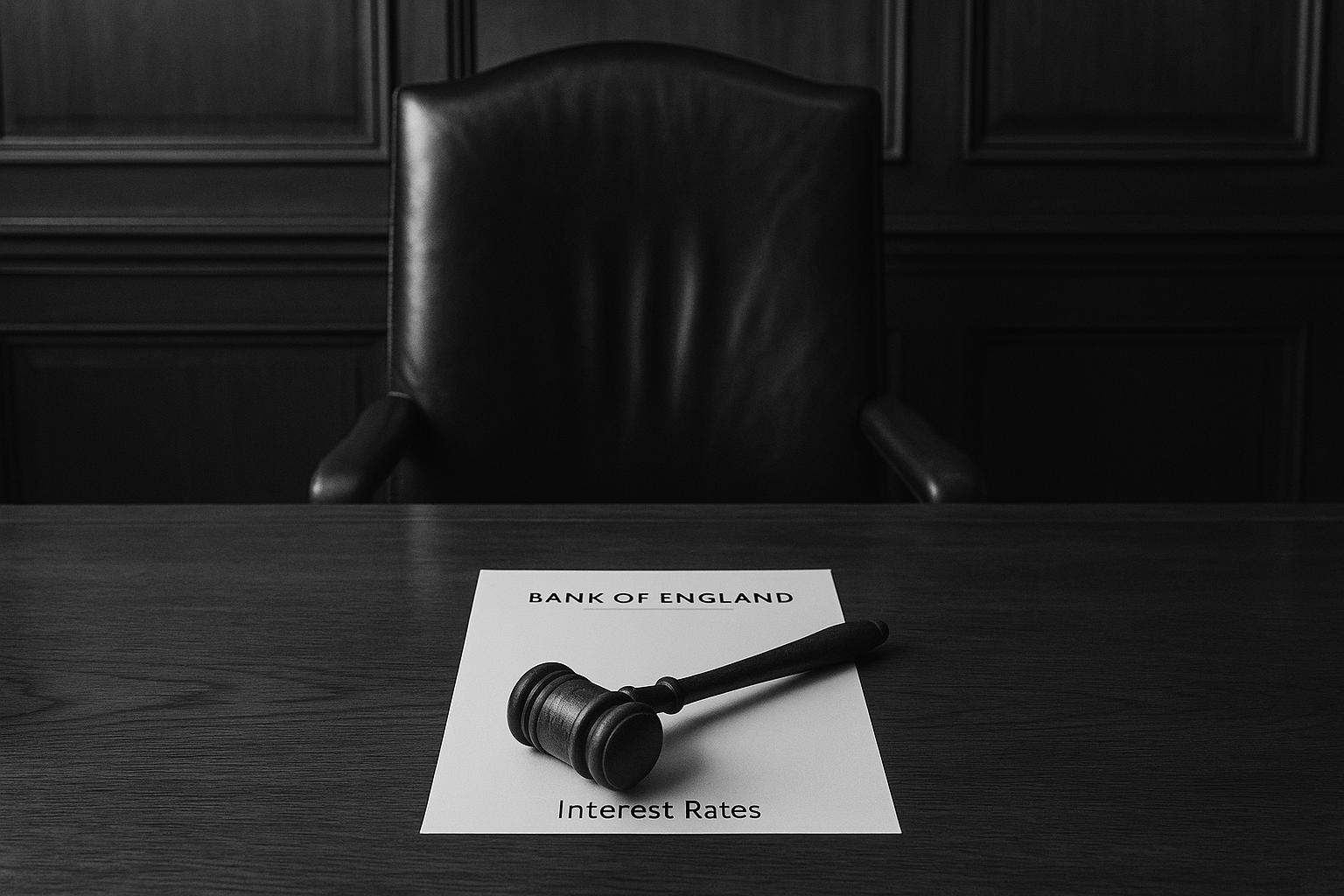As the Bank of England prepares to meet this week, the prospect of a pre-Christmas interest rate cut remains uncertain. Recent optimism that rates might be lowered for the sixth time in just over a year has been tempered by the impending UK Budget, expected later this month, which could reshape economic expectations. Inflation, while showing signs of easing, remains nearly double the Bank’s 2% target, and the Bank's rate-setters are reportedly hesitant to act before knowing the full extent of Chancellor Rachel Reeves' fiscal measures.
Inflation currently stands at around 3.8%, reflecting a notable decline but still a level that keeps the Bank cautious. According to economist Ellie Henderson from Investec, these inflation figures along with the unknown scale of tax hikes and potential public spending cuts in the upcoming Budget are likely to influence the Bank’s decision to hold rates steady at 4%. Traders are divided, with about a 50:50 chance of a rate cut this month. This uncertainty has contributed to sterling’s recent weakness—dropping below €1.14 against the euro and to a six-month low of $1.31 against the dollar—echoing the market volatility seen during the 2022 mini-Budget crisis under Liz Truss.
Economic indicators paint a mixed picture. Despite inflation overshooting targets, some of the recent rises have been attributed to temporary factors like food and energy costs, with forecasts suggesting inflation might return to the 2% target by mid-2027. Meanwhile, economic growth has slowed sharply, with data showing a minimal 0.1% increase in Q2 2025 and unemployment rising to 4.7%, the highest in four years. This sluggish growth has prompted Treasury chief Rachel Reeves to focus on long-term strategies such as infrastructure investment, trade deals, and AI development to foster sustainable economic expansion without resorting immediately to unpopular fiscal measures.
However, the context of Reeves’ fiscal approach is crucial. Since Labour came into power in mid-2024, Reeves has outlined plans involving a significant £40 billion tax increase aimed at closing financial gaps and funding public services. This includes a hike in national insurance contributions and other targeted tax rises on capital gains, private jets, and fee-paying schools, aiming to raise the tax burden to its highest level in over three decades—38.3% of GDP. These decisions, aimed at "fixing the foundations" of the economy after years of Conservative governance, have drawn political criticism and market unease, evidenced by higher interest rates on government debt and ongoing speculation about further tax hikes.
The fiscal tightrope Reeves must walk is delicate. In March 2025, she adjusted spending plans downward in response to slowed growth, with the Office for Budget Responsibility (OBR) halving growth forecasts and warning of increased borrowing and inflation risks. The OBR also highlighted potential risks from international factors such as the Ukraine war and US trade policies. These constraints, combined with pressure to maintain fiscal discipline, create uncertainty over how aggressively Reeves will raise taxes or cut spending, both factors that heavily influence the Bank of England’s monetary policy stance.
The Bank itself appears cautious. Earlier in the year, Chief Economist Huw Pill emphasised the need for prudence regarding further rate cuts, citing persistent underlying inflationary pressures and structural economic challenges, including supply bottlenecks and low business investment since Brexit. While some easing of policy has occurred, the Bank remains divided on the outlook, reflecting broader economic uncertainties.
Market analysts reinforce this caution. Goldman Sachs, for example, revised its forecast to expect no rate change in the upcoming December meeting, contrary to earlier predictions of a cut. The shift follows expectations of a more expansionary Budget and improved growth prospects in 2025, though further rate cuts are still anticipated to resume early next year, potentially lowering the Bank rate to 3% by November 2025.
In summary, the Bank of England’s forthcoming decision is being made amid a complex mix of mildly easing inflation, subdued economic growth, weakened sterling, and looming fiscal policy changes from Chancellor Rachel Reeves. Until the Budget’s specifics are revealed, including any significant tax increases or spending cuts, the Bank is likely to maintain a cautious stance, balancing the risks of stalling growth against the persistent challenge of bringing inflation down sustainably.
📌 Reference Map:
- Paragraph 1 – [1] (Daily Mail), [6] (AP News)
- Paragraph 2 – [1] (Daily Mail), [7] (AP News)
- Paragraph 3 – [2] (AP News), [3] (Reuters)
- Paragraph 4 – [6] (AP News), [3] (Reuters)
- Paragraph 5 – [3] (Reuters), [6] (AP News)
- Paragraph 6 – [5] (Reuters), [2] (AP News)
- Paragraph 7 – [4] (Reuters), [5] (Reuters), [1] (Daily Mail)
Source: Noah Wire Services
